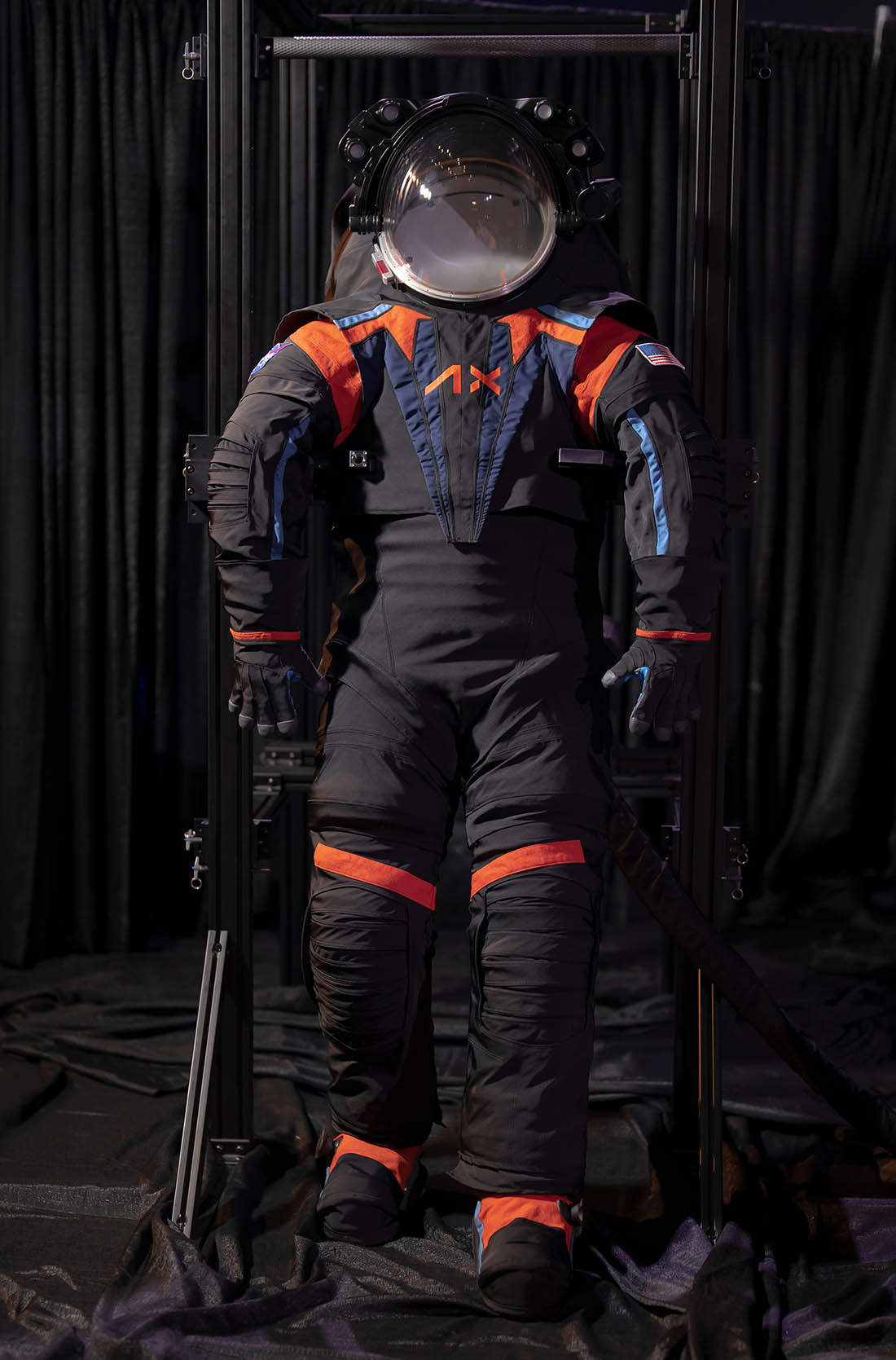The Final Frontier Has Never Been So Fashionable
Space provides a very unique environment in which to build products with particular attributes that can’t be built terrestrially. The value is there, from research and development (R&D) to generating new value pool and business models. In a 2022 article on the potential offered by the near-vacuum state of the atmosphere in space, as well as higher levels of radiation and micro gravity for R&D and manufacturing, McKinsey & Company points to the increase in the number of patents with “microgravity” in their title or abstract as rising from a mere 21 in 2000 to 155 in 2020. At the Advanced Textiles Association EXPO 2023, this was one of the hottest topics with speakers from NASA, Columbia Sportswear, Axiom Space, Aegis Aerospace and Kuraray America – all entering the debate exchanging their thoughts, experiences, and future direction.
As plans for the Artemis III trip to the moon (that will be the first landing since Apollo 17) gather pace, Evelyn Orndoff, Non-metallic Materials Engineer at the NASA Johnson Space Center (JSC) is clear about the many challenges faced, saying, “The lunar South Pole adventure represents the greatest thermal challenge for visitors and machine because of its temperatures, its daylight and night times, and its craters.”
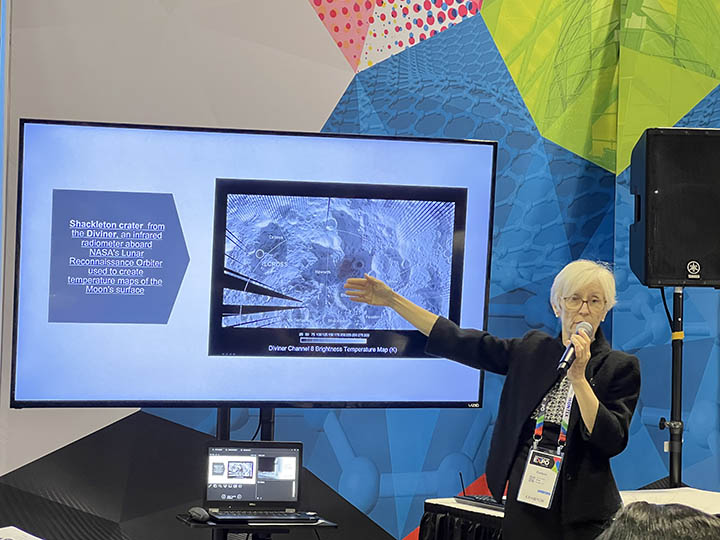
In order to protect the astronaut and vital functions of the entire lunar gear, the requirements are substantial: an outer fabric with high emissivity and low absorptivity for thermal management (space suit; powered hardware); covers to prevent materials from being damaged by extreme temperatures (non-powered hardware); outer fabric and covers resistant to abrasion and act as a barrier to lunar dust (space suit; hardware); outer fabrics should not attract dust particles that are positively charged during the lunar day.
The thermal challenges in space are considerable, where materials need to offer protection against temperatures that can reach -193 Celsius at night in the polar regions, then going up to 111 Celsius during the day in equatorial regions. Alongside this is the need to cool the active body and move moisture away in an environment where convection does not occur because of the vacuum where heat stays rather than rises. The innermost garment contains tubing filled with water for cooling. This is largely unchanged since the first missions and according to Evelyn Orndoff it is still the best option available. However, Axiom Space who have been awarded the contract by NASA to design and make the Artemis III spacesuits, anticipate that there will be a replacement material and garment in place for Artemis III onwards, as there will be more time for development and to undertake the rigorous testing and
certification needed to approve a fully new material for use in space.
From Space to Earth Suits
Heat protection is not confined to the spacesuit, and Columbia Sportswear have a material going to space with a launch scheduled for January 2024. They have been working with Intuitive Machines to put a robotic lander on the moon. This will be part of NASA Artemis program’s IM-1 mission laying the foundation for a sustainable human presence on the moon. Columbia’s role has been developing a protective layer for the robotic lander using a material based on their Omni-heat Infinity technology.
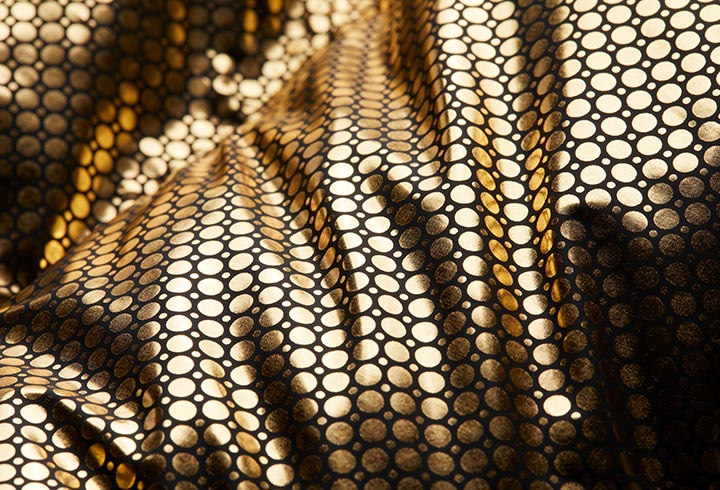
Omni-heat was launched in 2010 and since then has been further as Omni-heat 3D (2018), Omni-heat Black Dot (2020) and Omni-heat Infinity (2021). The latter was inspired by NASA’s space blanket and uses an expanded pattern of metallic gold dots to reflect more body heat and deliver warmth quickly, while wicking away moisture from the body and retaining breathability. Omni-heat Infinity offers a very significant 50% surface coverage, compared with 25% in the original Omni-heat. In terms of heat, this translates as a 40% increase in Radiant Heat Reflection.
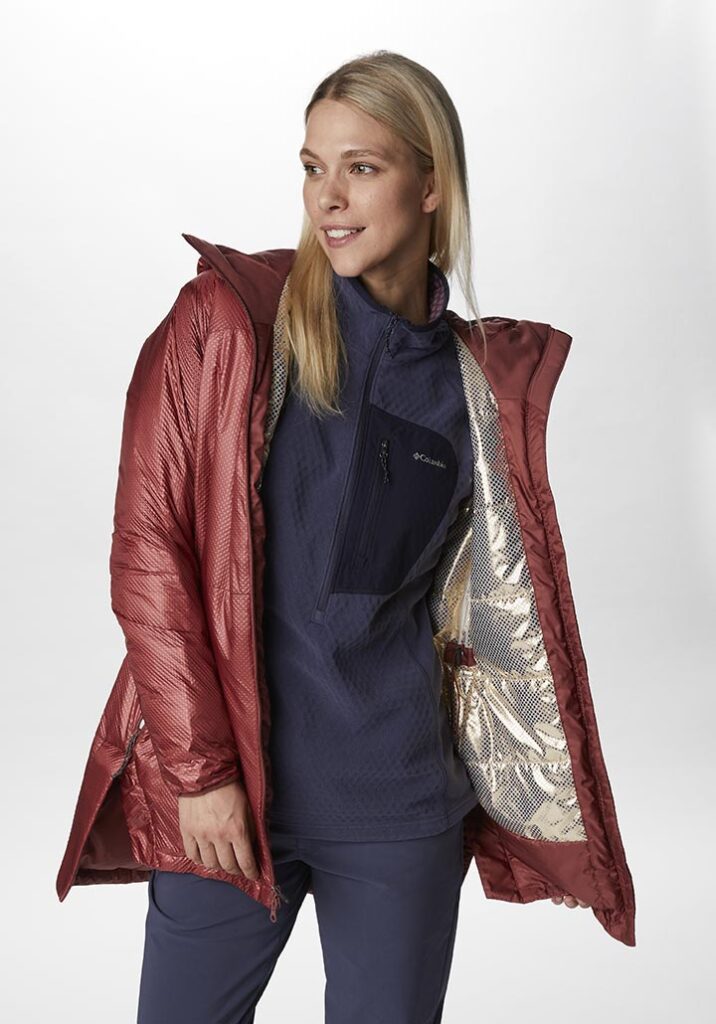
Already widely used in sportswear jackets by the brand, this next venture sees it offering thermal protection to the Nova-C lunar lander as the spacecraft lands on the moon for the first time in half a century. This comes within NASA’s Commercial Lunar Payload Services (CLPS) initiative that includes both experimental NASA technologies and payloads from commercial customers. The version used for space will be a Multi-layered Insulation (MLI) blanket. This allows for radiation to be reflected between the metallic foils, deflecting the radiation at each stage. This approach has also been applied to Columbia’s Double-wall Elite jackets for hiking. The design traps heat using a reflective gold dot technology while deflecting wind. It retains a light weight and low-bulk, to provide 60% greater warmth than the original Omni-heat jacket.
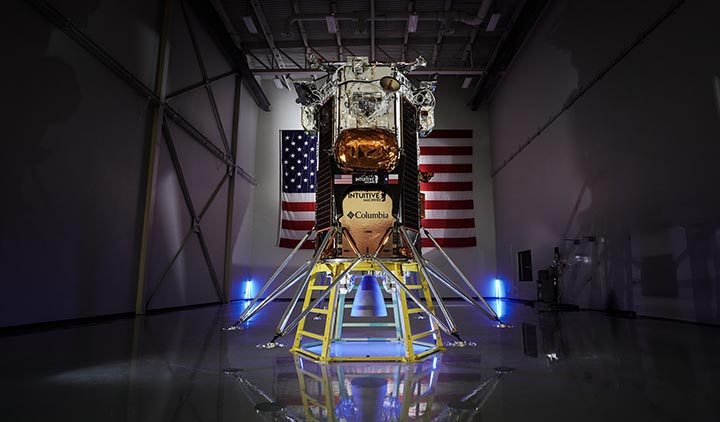
One of the challenges has been cost as Haskell Beckham, Vice President of Innovation at Columbia Sportswear puts it: “It’s one thing to put heat innovation into a $600 jacket, it’s another thing to put it into a $200 jacket that more people can afford.” The jackets are currently selling for $200, so another challenge resolved.
Astronauts Wear Prada
Axiom Space build space stations including private astronaut missions, “we provide space access to all” offers Chyree Batton, Commercial Innovation Strategy Lead for in-space solutions and manufacturing – all who can afford it that is. Axiom is in the process of designing and making the Artemis III spacesuits that will be worn by a crew that will land on the dark side of the moon, the South Pole, where no human has ever been. The company has teamed up with a wide range of partners, some where there is an obvious connection, such as NASA and Kuraray America.
Less obvious is their partnership with Prada, better known for high fashion. “Prada has extensive experience and history developing composite materials and fabrics,” explains Chyree Batton, “way back into the 90s they have been working on this [Americas Cup] competition, so we are going to tap into this knowledge base and their reach to help us to innovate to reimagine some of those technologies within our spacesuit.” The relationship she sees as a good example of STEAM – bringing the art and science together.
NASA’s Evelyn Orndoff raised the question of whether the Artemis space program provides the impetus for manufacturing some of NASA’s fabrics that were developed but not yet produced. Chyree Batton pointed to the great value in looking at existing materials from the space agency before starting on the journey of developing a new textile from scratch.
Developing and then certifying a 100% new material for use in space can take a very long time. The company first looks at how they might leverage materials already certified by NASA, to see how they might put a spin on it.
Because the Artemis trip will be to such a temperature-challenged environment, they also need to work with textile manufacturers working with cryogenic materials. The thermal pressure on materials will be considerable as astronauts will experience a sunset resulting in extreme temperature shifts every ninety minutes. They need to ensure that any material choice ensures both astronaut safety and comfort. There are new problems to face, such as lunar dust that is charged positive in the morning and negative at night. Dust is a significant problem because it does not weather in space, remain sharp with the potential to damage fabric. Also important is ensuring that the dust is not inadvertently brought back into the habitat on astronauts clothing.
The solutions that Axiom are looking at includes working both with NASA legacy materials, as well as new coatings that can repel the dust, composite materials and engaging with new partners as they prepare for launch of Artemis III. Lunar dust is particularly pervasive, so they also plan to have special brushes and nitrogen gas to get rid of as much as possible, but as a final containment the astronaut will don an outer suit with a drawstring to keep the habitat protected.
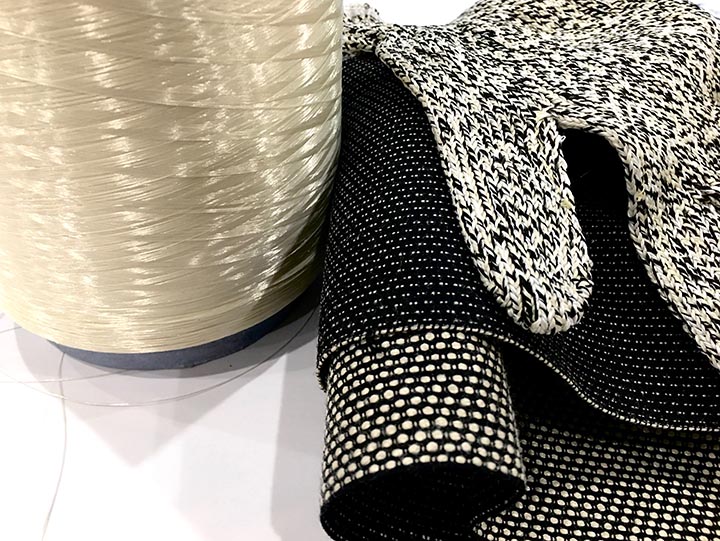
Kuraray America are manufacturers of Vectran, with Matthew Reid describing the company as engaging more in polymer than fiber science. Vectran is a Liquid Crystal Polymer (LCP), that uses a special polymer based on polyester chemistry. It offers an excellent strength to weight ratio, has low crystallinity that competes in world with aramids on one side and High Modulus Polyethylene (HMPE) on the other so possessing characteristics of both. The fiber they acknowledge is expensive, but their mantra is “we work where others fail,” so that it is used in niche applications including extreme environments. The fiber already has a long history of use ranging from tethers for landing vehicles to a crucial role in the Mars Rover projects. Here it is used during the landing process in the airbags. The airbags are inflated when landing in order to cushion the impact of landing, protecting the vehicle as it bounces around thirty times on the rough surface before fully coming to a stop when the airbag then deflates.
Vectran has been found to work very well in the harsh environment, inflating and deflating without degradation of the fiber, that has been shown to increase in strength as the temperature goes down to cryogenic temperatures. Projects such as the Pathfinder, Spirit, and Opportunity Mars landings are a few examples where fabrics woven with LCP fiber were used in space application. Today, LCP fibers are being used to build the life habitat shelters that will be linked to the International Space Station.
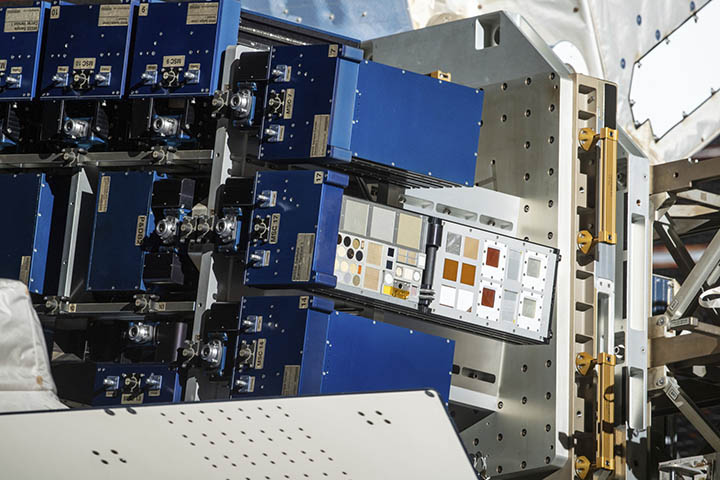
Testing is crucial for applications in space with Aegis Aerospace providing commercial Space Testing as a Service (STaaS) in space. The atmosphere that materials have to withstand are extremely harsh: constant UV that is unfiltered because there is not atmosphere to do this so that materials are exposed to UVC, that is the shortest wavelength that we do not usually have to worry about on earth but is very damaging to textiles and polymers in space. The microgravity can alter products to make them more brittle, the atomic oxygen causes oxidation resulting in material degradation while a lack of vacuum can cause materials to form, misform or misshape. Jason M.F. Smith, Customer Solutions and New Business Development Lead at Aegis, counters the challenges with the reminder “there are some advantages such as the clarity aspect beneficial to creating a textile that is improved or new, that is stronger or more durable, even more comfortable.” Adidas, for example, have sent polymers to space with the goal to provide a sole that would be more comfortable for astronauts.
The space industry has always looked to build collaborations with manufacturers and brands through material development work as well as programs such as Spinoff. This relationship has never been stronger, as evidenced here through the very wide range of collaborators and the benefits that these are already bringing for material development both in space and on earth.


